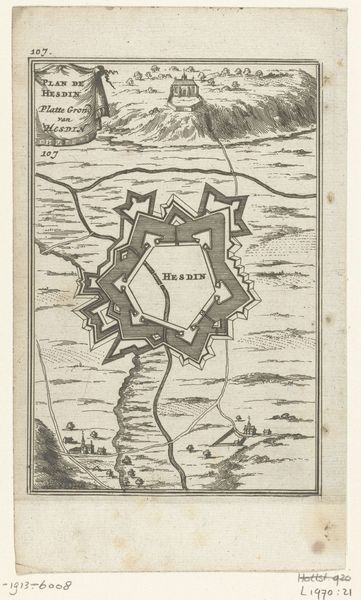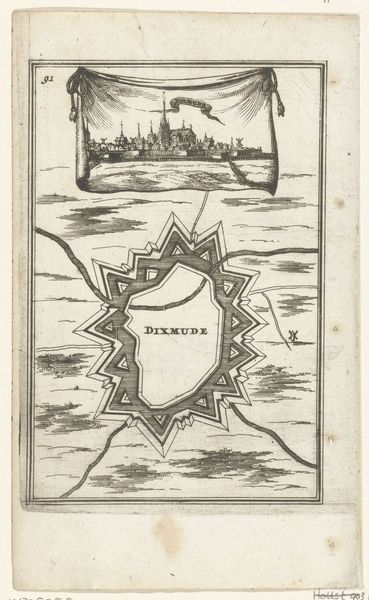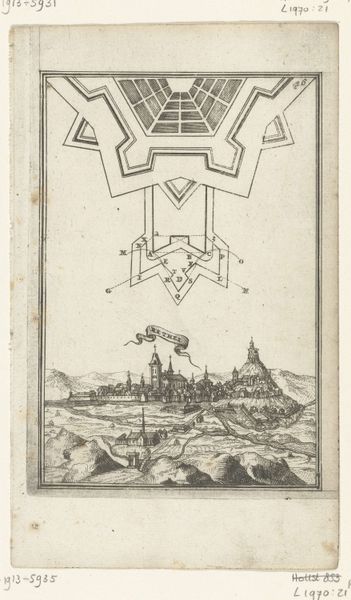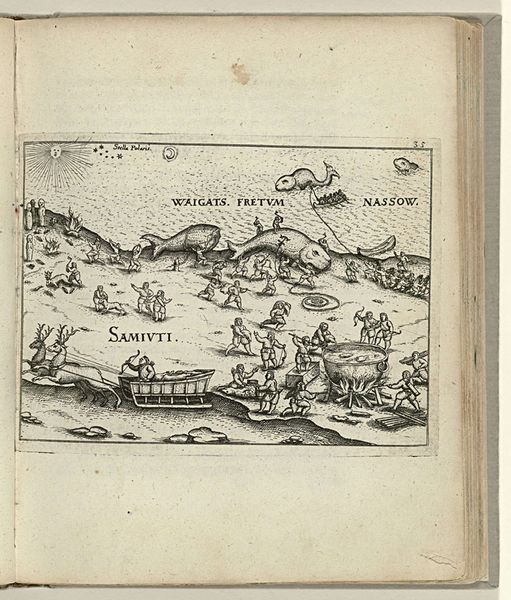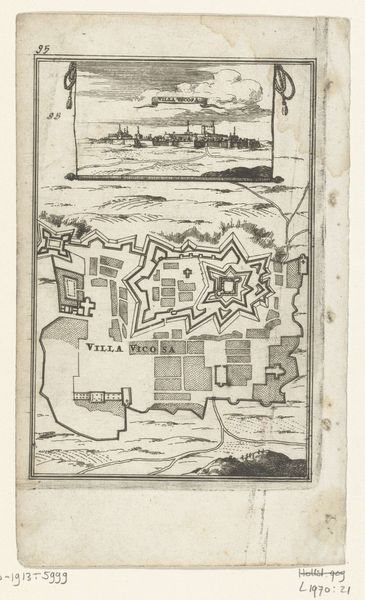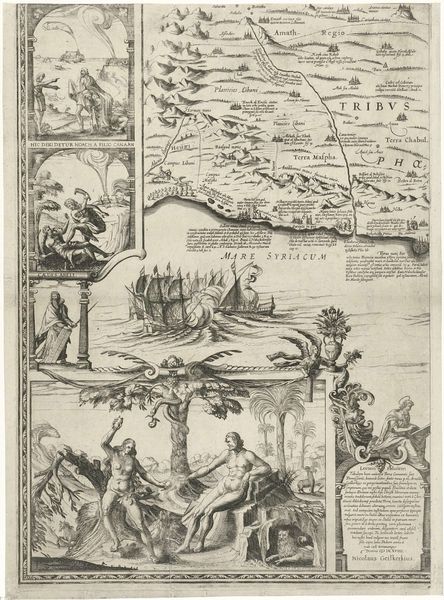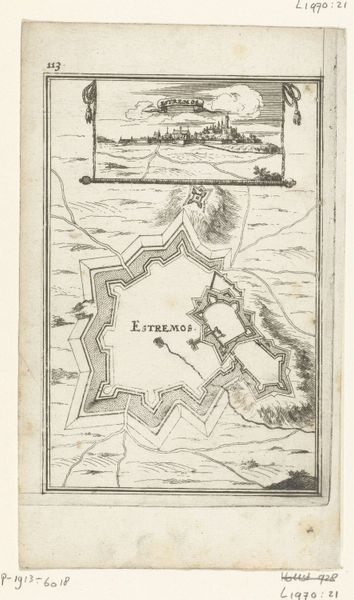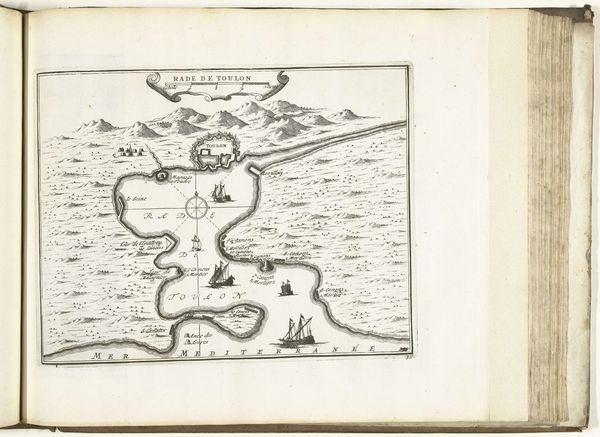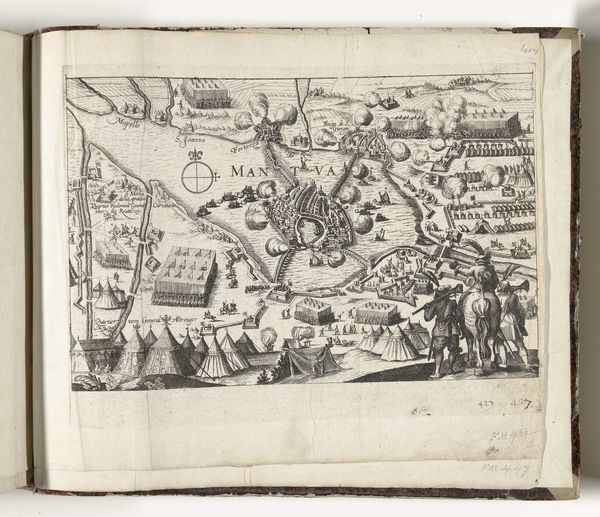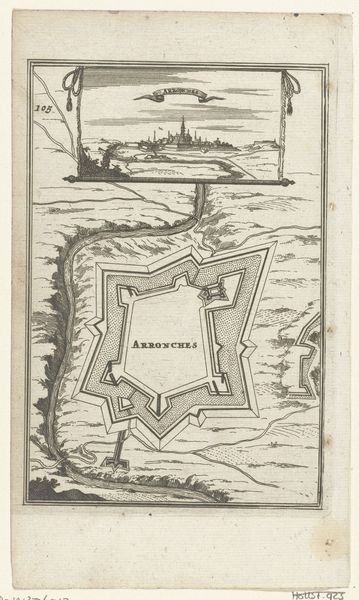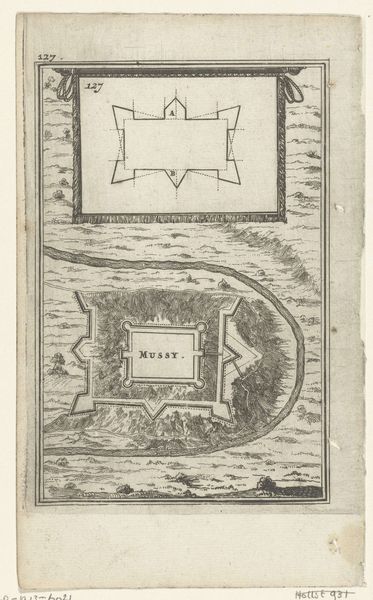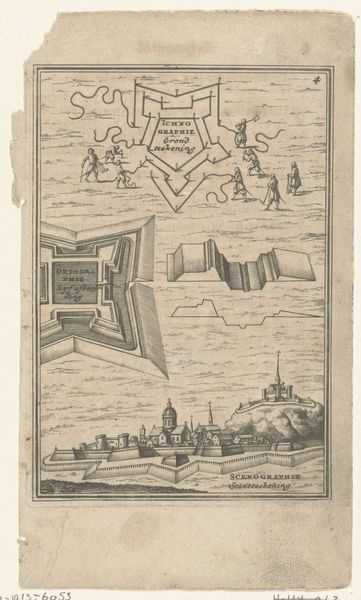
Illustratie voor 'Den Arbeid van Mars' van Allain Manesson Mallet 1672
0:00
0:00
print, engraving
#
baroque
# print
#
perspective
#
geometric
#
line
#
cityscape
#
history-painting
#
engraving
Dimensions: height 185 mm, width 112 mm
Copyright: Rijks Museum: Open Domain
Editor: This is 'Illustratie voor 'Den Arbeid van Mars' van Allain Manesson Mallet,' an engraving by Romeyn de Hooghe from 1672. The piece looks incredibly detailed and technical, almost like an architectural blueprint mixed with a landscape. The precision of the lines is striking. How would you interpret the visual language of this piece? Curator: The key to this work lies in its lines. Notice the sharp, deliberate nature of each engraved line. The use of line not only creates form, depicting buildings, landscapes, and fortifications, but it also establishes the very structural foundation of the work itself. What sort of geometric properties or relationships are observable? Editor: I see how the shapes and forms are defined almost solely by lines. There's a definite contrast between the organic shapes in the landscape and the sharp geometric forms of the city fortifications. The city and surrounding land use linear perspective in an impressive display of structure. Curator: Precisely. Perspective is used not just for pictorial representation but also as a formal element contributing to the order and spatial construction of the artwork. Now, consider the arrangement of the composition. Note that it is divided, presenting a bird's-eye view of the land paired with a distant representation of the city. How does that affect our reading of the subject? Editor: It creates a kind of objective, almost scientific viewpoint. The image is both informational and representational. The division invites us to see the relationship between city and countryside, or even between strategy and lived space. Curator: Indeed. The division isn’t merely about geography. It is an invitation to contemplate the formal relationships structuring our comprehension of space, power, and representation. Editor: I see the formal elements and attention to lines giving clarity to this artwork, shifting the viewing away from content. This has made me appreciate the formal beauty of cartography and architectural illustration. Curator: Analyzing the artwork's lines and forms unveils the relationships among space, representation, and strategic vision embedded within its very structure.
Comments
No comments
Be the first to comment and join the conversation on the ultimate creative platform.
